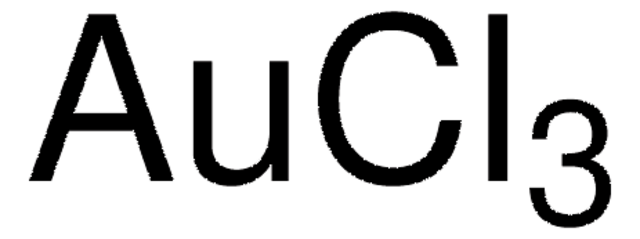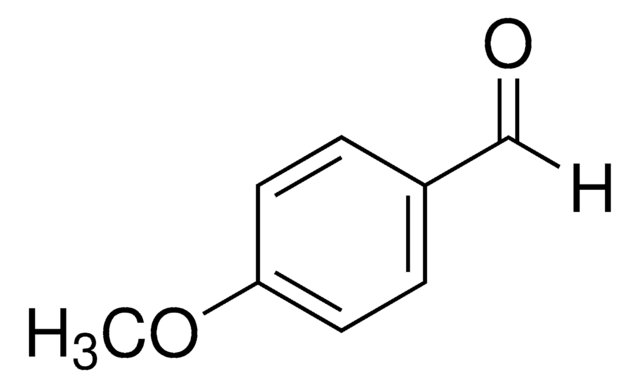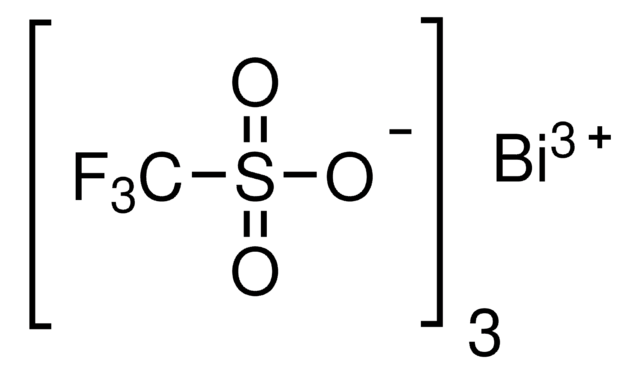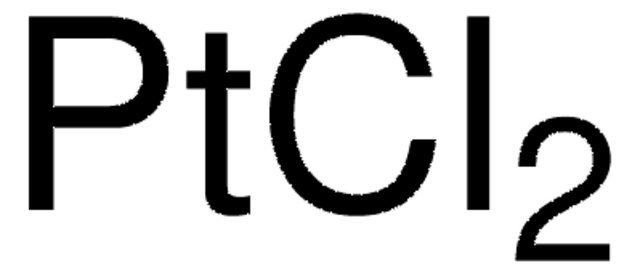所有图片(3)
About This Item
线性分子式:
AuCl3
CAS号:
分子量:
303.33
EC 号:
MDL编号:
UNSPSC代码:
12352302
PubChem化学物质编号:
NACRES:
NA.23
方案:
99%
表单:
powder
推荐产品
质量水平
方案
99%
表单
powder
反应适用性
reagent type: catalyst
core: gold
SMILES字符串
Cl[Au](Cl)Cl
InChI
1S/Au.3ClH/h;3*1H/q+3;;;/p-3
InChI key
RJHLTVSLYWWTEF-UHFFFAOYSA-K
正在寻找类似产品? 访问 产品对比指南
一般描述
Gold(III) chloride is a Lewis acid with monoclinic structure. It is a hygroscopic and light-sensitive solid. It is frequently utilized to dope organic conducting compounds, to boost their conductivity. It also serves as a catalyst in organic synthesis and a precursor to synthesize gold nanoparticles for various electrochemical applications.
应用
Gold(III) chloride can be used:
- As a dopant to fabricate graphene protection layer between PEDOT:PSS and ITO for perovskite solar cells. It helps to enhance the photoconversion efficiency by protection ITO and collecting holes.
- To fabricate flexible and transparent electrodes for OLEDs. It fills the defects in graphene and improves current efficiency without affecting the transmittance.
- As a precursor for green synthesis of gold nanoparticles.
警示用语:
Warning
危险声明
危险分类
Eye Irrit. 2 - Skin Irrit. 2 - STOT SE 3
靶器官
Respiratory system
储存分类代码
11 - Combustible Solids
WGK
WGK 3
闪点(°F)
Not applicable
闪点(°C)
Not applicable
个人防护装备
dust mask type N95 (US), Eyeshields, Gloves
从最新的版本中选择一种:
分析证书(COA)
Lot/Batch Number
Ligand-induced gold nanocrystal superlattice formation in colloidal solution.
Lin XM, et al.
Chemistry of Materials, 11(2), 198-202 (1999)
A comparative study of galvanic replacement reactions involving Ag nanocubes and AuCl2? or AuCl4?
Au L, et al.
Advanced Materials, 20(13), 2517-2517 (2008)
Synthesis and optical properties of cubic gold nanoframes
Au L, et al.
Nano Research, 1(6), 441-449 (2008)
The crystal structure of gold(III) chloride.
Clark ES, et al.
Acta Crystallographica, 11, 284-288 (1958)
Vanajakshi Gudla et al.
The Journal of organic chemistry, 76(24), 9919-9933 (2011-10-28)
An intramolecular approach to generate compounds containing an arylnaphthalene lignan scaffold in high yields is presented. It involves a sequential intramolecular electrophilic attack of carbonyl on arylalkyne followed by benzannulation catalyzed by gold salt. AuCl(3) in combination with AgSbF(6) works
商品
Noble-metal nanostructures find diverse applications from catalysis to biomedical research, leveraging surface properties in various fields.
Plasmonic nanoparticles have unique optical properties that can be tailored to suit a variety of applications in the biotechnology1–8 and electronics9–16 industries.
我们的科学家团队拥有各种研究领域经验,包括生命科学、材料科学、化学合成、色谱、分析及许多其他领域.
联系技术服务部门









